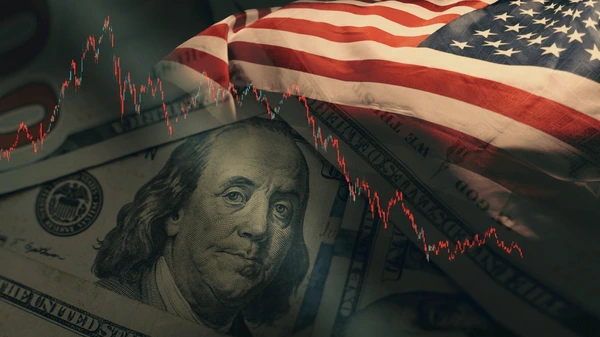About Us
Contact Us
Advertise With Us
Disclaimer
Privacy Policy
Terms & Conditions
Copyright © 2024 - BoldDiscussions.com

Let's talk about money, but not the kind you keep in your wallet. This article dives into the recent news that the United States government hit a milestone (important point in time) – a not-so-celebratory one – of spending over $1 trillion on interest payments for its national debt in 2023. That's a lot of zeros! So, what does this mean for you and the country? Buckle up, because we're about to break it down.
Why is the Interest Payment So High?
Imagine you borrow money from a friend to buy a new bike. You agree to pay them back with a little extra on top – that extra is the interest. The same goes for the U.S. government's debt. Over the years, the government has borrowed a lot of money to fund different programs and projects. Now, it has to pay back not just the borrowed amount, but also the interest on that loan.
Interest Rates on the Rise
Here's the kicker: interest rates have been going up lately. This means the government is paying more for each dollar it borrowed in the past. Think of it like paying more in rent for your apartment because the market rates have increased.
Debt Snowballing
On top of rising interest rates, the total amount of debt the U.S. owes ($34 trillion!) is also growing. This creates a snowball effect – the more you owe, the more interest you pay, which then adds to the total debt, leading to even higher interest payments in the future. Yikes!
Debt vs. Spending Priorities
This surge in interest payments is causing some concern. For the first time ever, the amount spent on debt interest surpassed what the government spends on defense! That means less money is available for other important things like healthcare and infrastructure. It's like having a giant credit card bill that keeps getting bigger, making it harder to pay for groceries and other necessities.
The Future Forecast: Not So Sunny
Experts predict that the U.S. will spend a whopping $12.4 trillion on interest payments over the next decade. That's a huge chunk of change, averaging out to about $37,100 per American! That's a lot of money coming out of everyone's pocket, even if they don't feel it directly.
A Looming Deficit
The situation is further complicated by the ongoing budget deficit. The deficit is basically the difference between how much money the government spends and how much it takes in. Think of it like spending more than you earn each month. A high deficit adds to the national debt, which in turn, leads to even more interest payments. It's a vicious cycle!
So, what can be done? There's no easy answer, but it likely involves a combination of finding ways to reduce spending, exploring ways to increase revenue, and maybe even looking at strategies to manage the debt more effectively. It's a complex puzzle, but one that our leaders need to figure out to ensure a healthy financial future for the country.
The U.S. reaching a $1 trillion milestone in debt interest payments is a cause for concern. It highlights the challenges of a growing national debt and the impact it has on spending priorities. While there are no simple solutions, addressing this issue is crucial for the country's long-term economic health.
Disclaimer.
This article provides information only and should not be construed as advice. It is provided without warranty of any kind. Also please note that content on this platform may be subject to copyrighted material. If you believe we have used your content in any way then please get in touch with us. We will take down your content immediately.
Share This Post





BOLDDISCUSSIONS
We Produce Content That informs, Educates And Entertains People Around The World to stay updated on every topic with confidence.
Copyright © 2024 – BoldDiscussions.com


